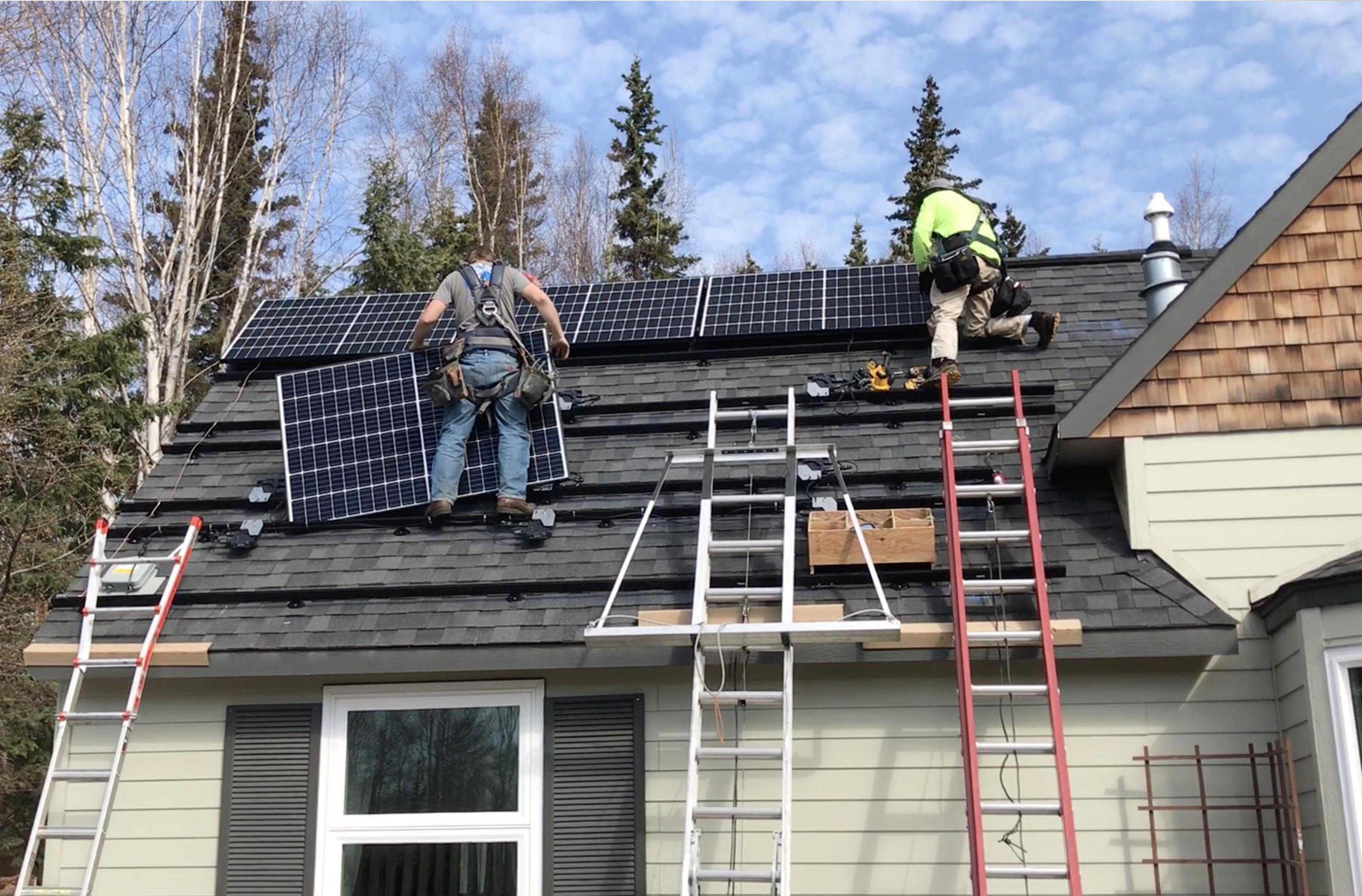 This project tracks the performance and cost of solar photovoltaic (PV) technology
in Alaska as well as the installed capacity of net metered solar connected to the
Railbelt utilities. The Railbelt electrical grid is the service area served by four
regulated public utilities that extend from Fairbanks (northern portion) to Anchorage
and the Kenai Peninsula (southern portion). Approximately seventy percent of the Alaskan
population lies within the Railbelt region.
This project tracks the performance and cost of solar photovoltaic (PV) technology
in Alaska as well as the installed capacity of net metered solar connected to the
Railbelt utilities. The Railbelt electrical grid is the service area served by four
regulated public utilities that extend from Fairbanks (northern portion) to Anchorage
and the Kenai Peninsula (southern portion). Approximately seventy percent of the Alaskan
population lies within the Railbelt region.
Net metering allows residential electric utility customers to install and use certain types of renewable energy generation to offset their monthly usage, and they can sell excess power to their serving utility.
If these customers install a solar PV system on their roof, for example, it may generate more electricity than the home uses during daylight hours. They are credited at the retail rate for energy pushed back onto the grid up to their monthly consumption. Beyond that, they are credited at the wholesale rate.
Alaska’s net metering regulations were approved by the Regulatory Commission of Alaska (RCA) in 2010 for large regulated utilities. Since 2016, ACEP has been using RCA filings to track the solar production uptick of the Railbelt utilities and has generated an annual report since 2020, presenting the data in an easy-to-read format for interested parties.




